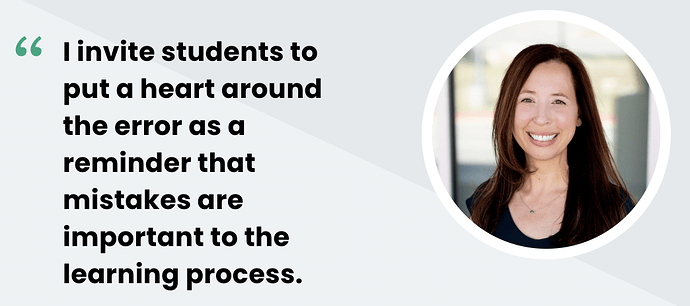At VEX Worlds, I had the privilege of chatting with @Bob_Mimlitch, and was asked an intriguing question – "Do you use the ‘F word’ with your students? In other words, did you say the word ‘failure’? How do you talk about failure with your students?" This question has been percolating around my brain for weeks now, and I’m eager to pose it to the larger community.
To me, as with most things in the classroom, my immediate reaction was, ‘it depends.’ In my classroom, with young students, things like making mistakes, trying again, problem solving, and talking about how to make a situation better were as natural as saying good morning when you came in the door. Did I say that was a ‘failure’ or use that word? Probably not, but the concept was there. The idea that you could write a word incorrectly, we then figure out what was wrong, and you try again to write it more accurately - the iterative process of learning from a failed attempt at something was present in every moment of every day.
But Bob’s question made me think about the language that we’re using with students to talk about these things. The word ‘failure’ carries a lot of weight - it is, in many places, a ‘heavy’ word. Whereas ‘mistake’ or ‘try again’ or even just ‘wrong’ don’t have the same gravity, and appear to get the point across in perhaps a gentler way. And with young children, the gentler approach makes sense, right? We want to frame learning, and the process of learning, as something supportive, to hopefully incite a love for that process. But as students get older, the language we use changes - and what was once simply a ‘mistake’ can become a ‘failure’, and just be a more grownup way of explaining iteration and learning. However, often ‘failure’ carries a much stronger connotation.
So, if we want to be able to use failures as opportunities to learn, how do we shape our language and classroom culture to support that? Does it come from changing the way we use the word failure? Or is the concept of learning from mistakes enough, regardless of the words we use to describe it?
John Dewey famously said, “Failure is instructive. The person who really thinks learns quite as much from his failures as from his successes.” And I’d dare say every teacher has seen this in action! So how do you make students (and parents) comfortable with this way of learning?
@Jason_McKenna, @Anna_Blake, @Omar_Cortez, @Mark_Johnston, @Michele_Pikunic, @Aimee_DeFoe - I’m tagging all of you (from across grade levels) to get the conversation ball rolling here ![]()

